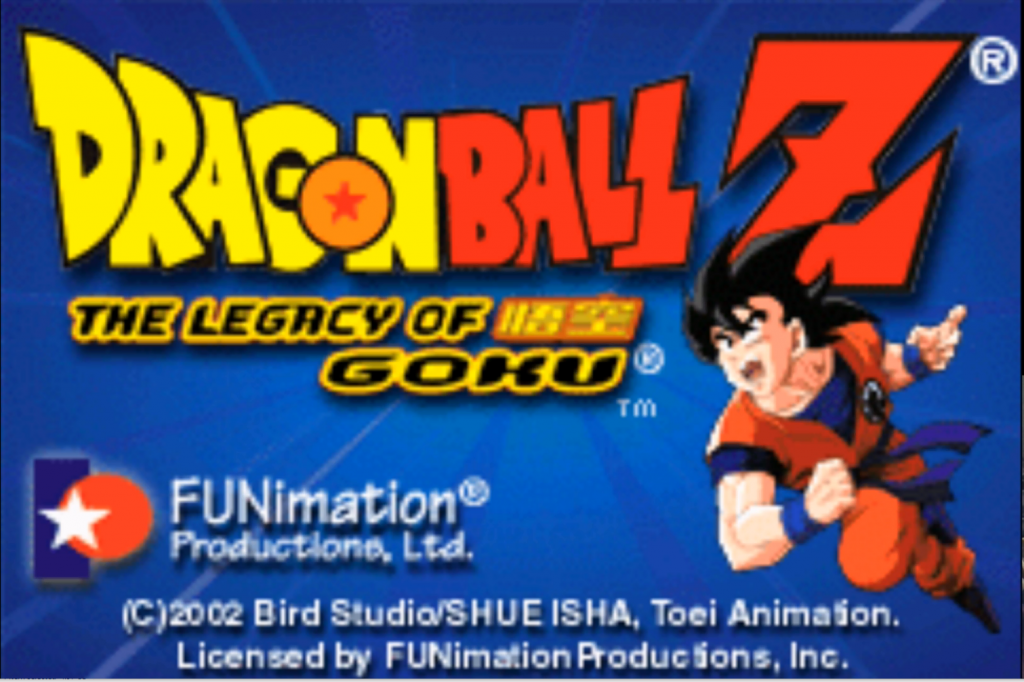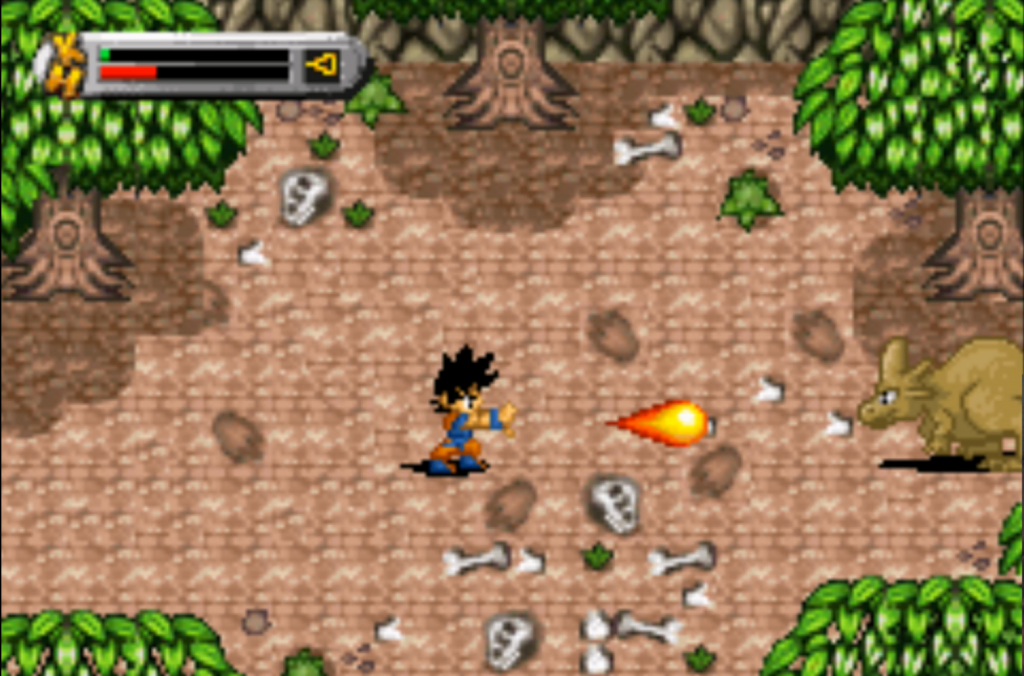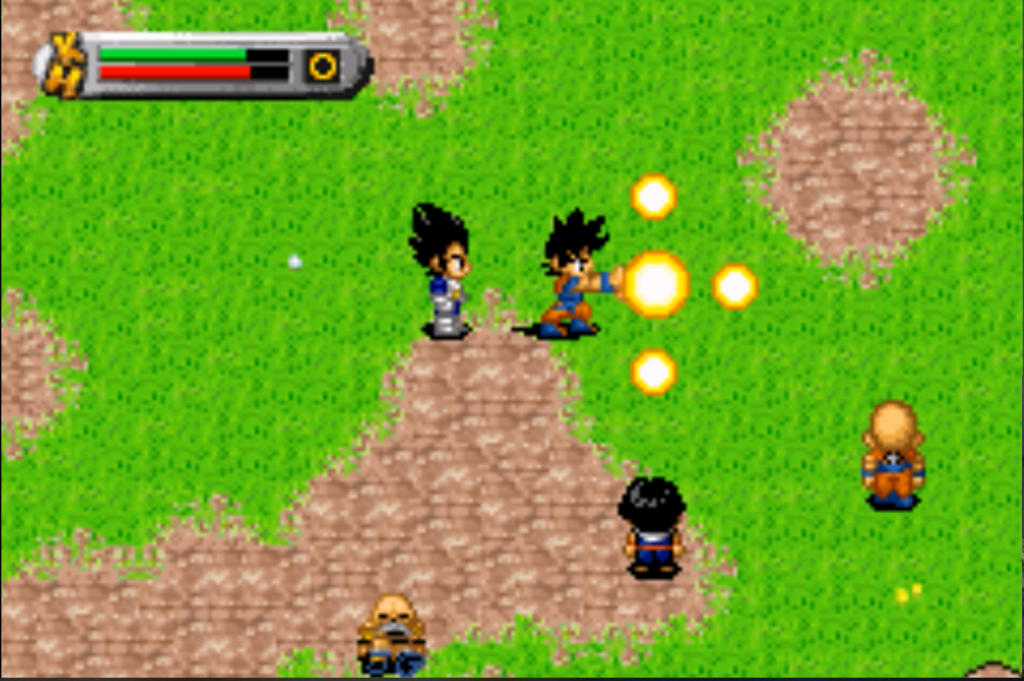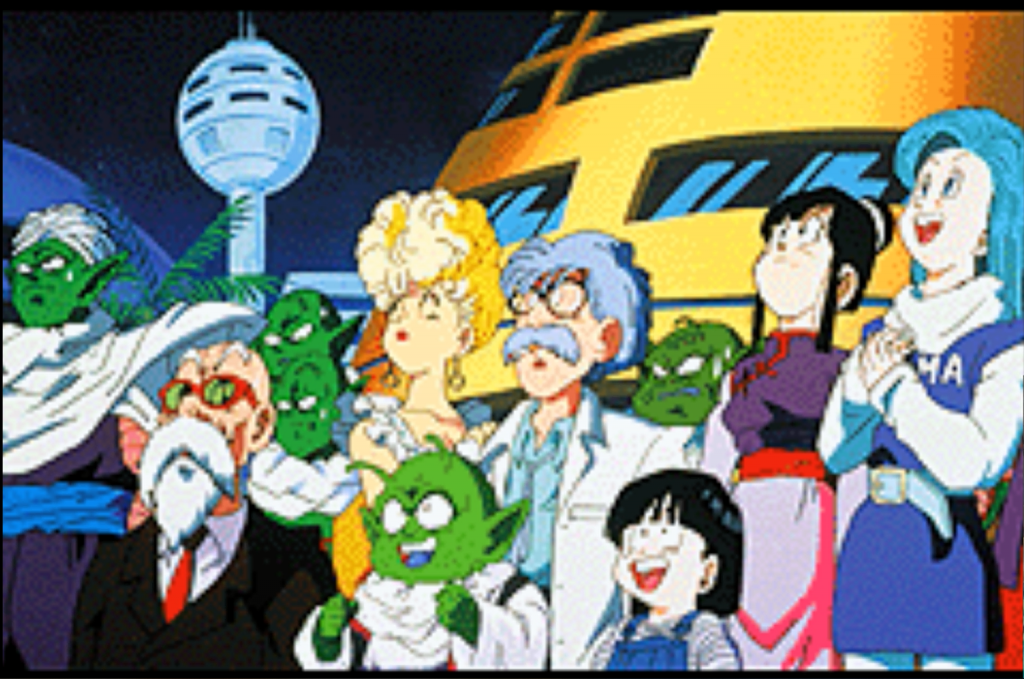I guess a strong enough franchise can carry a game’s sales regardless of quality or gameplay…
For its time, DBZ Legacy of Goku (LoG) was roughly on-par with other GBA titles of its time. The gameplay was lagless, not completely terrible to look at, had good music and ran at a rather fast-pace, which in 2002 was the better end of what you could ask for when compared to other franchise-based GBA titles. A quick nostolgia shout-out has to go to this one, in that it was the first GBA title that my brothers and I got our hands on as kids, in the form of our youngest acquiring a GBA and this cartridge for his birthday. We all played and beat it numerous times but… well, we were kids with nothing better to do.
Back then, we were just amazed that the game had a full range of actual color. Up until that point, we’d been scraping by on several not-so-great GB Color titles, so we couldn’t help but get excited about LoG. Even then though, I knew as I played this that it wasn’t that great of a game. I mean, sure, the package is all there–recognizable sprite-work, cutscenes from the anime, RPG mechanics–but… it’s not really much of a game.
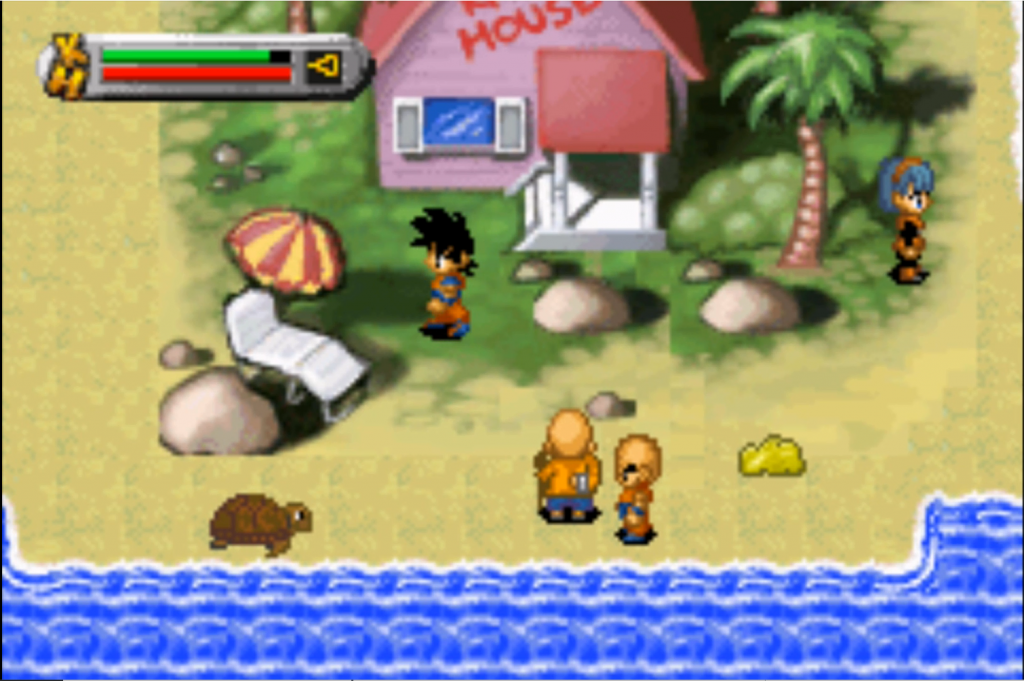
Your A & B are punch and energy attack, and you only learn 3 energy attacks throughout the entire game. Punch deals… damage… but isn’t terribly useful because it exposes you to counter-attack without any course of defense. Ki-Blast (your first energy attack) is only useful superior insofar as it is a ranged attack, letting you kite everything that is stronger than you until you gain a few levels. Solar Flare is your spammable, “freezes everything on screen move” which effectively renders the game laughably easy once you get it. The last, the Kamehameha Wave, quickly replaces the Ki Blast, simply because it deals more damage. And that’s it.
To make this worse, every single enemy in the game uses the exact same AI with one small variant–the ability to charge up a Ki blast or not. That’s all you’ll get. Even with bosses! This turns all of the combat in the game into a kite-fest, with you simply running away, solar-flaring, charging up a Ki or Kamehameha, letting it loose and repeating the process over and over again. There’s no equipment, no other skills, no party members… There are technically healing items, but they are cheaply implemented. Herbs heal 25% health, Senzu Beans 100%, and they are littered everywhere. Not that it really matters though, since if you are playing on the hand-held, all you need to do is save the game (which you can do anywhere at any time) and soft-reset the device to reload at full health and Ki. Actually, most map-triggers, items, etc. can be re-triggered either by a reset or simply a map transition. You’ll need this though, as if you’re not grinding against the enemies you encounter, you’ll just make things harder for yourself overall since speed of success or failure is dependent on Goku’s level, which balloon his stats exponentially for each level gained. This means that one moment you’re fighting an enemy at level 10 that can wreck your day, and the next (after a few levels) they’re laughably obsolete.
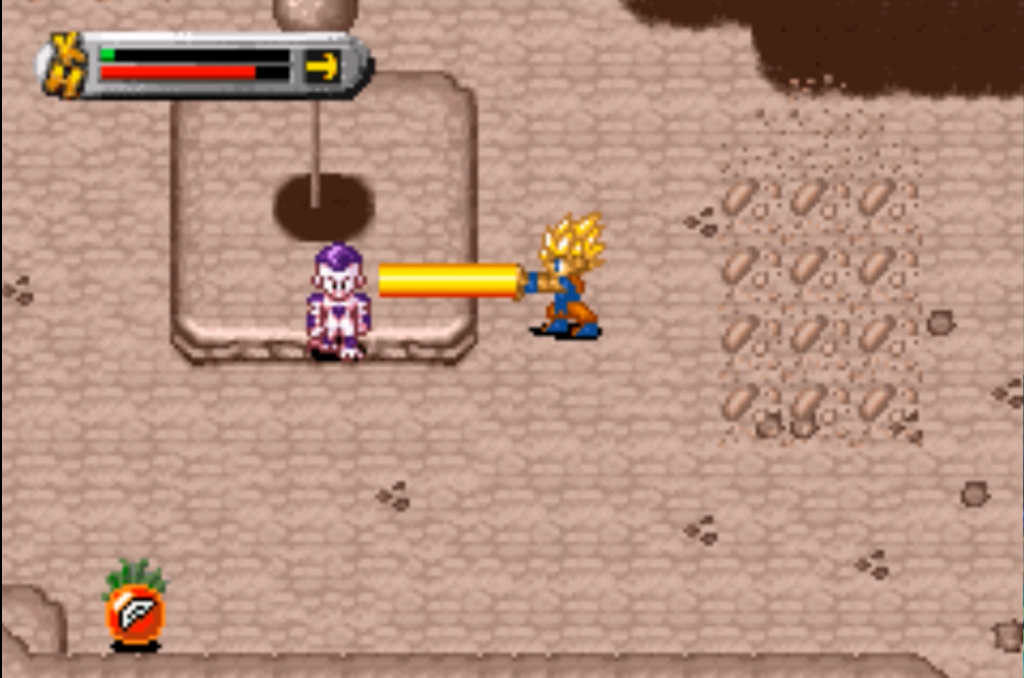
The game ends on a cliffhanger after an “epic” fight against Freiza with the heroes wondering about the fate of Goku on planet Namek. Actually, it’s kind of hilarious that we even make it all the way to Freiza considering how ridiculously short the game is. LoG can easily be finished in 3 hours or less, yet it spans the course of the 113 episodes of DBZ season 1 and 2. Being fairly familiar with the show, it leaves me with plot-line whiplash at times, with huge chunks of the anime being summed up in a single text box, or characters hilariously dying off-camera within the span of a couple seconds. Oh well; if you’re interested, I recently replayed the title and posted it to Youtube to relive my fond childhood memories. That being said, this is easily a Tier 3 title at best. It’s quite playable but there’s a very little value to fan or initiate alike, and after you finish the game it lacks replayability of any kind.
